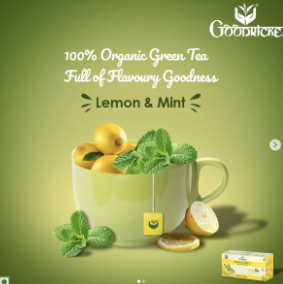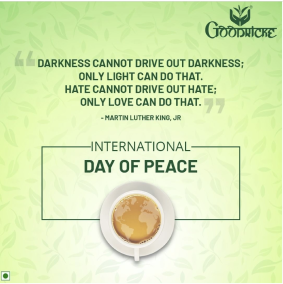The Ultimate Mood Lifter: Here are More Reasons Why Darjeeling Tea is Named the Champagne of Teas
When William Cowper, an 18th Century English Poet, said that "Tea- the cups that cheer but not inebriate," he must be referring to Darjeeling tea which has earned the title of the "champagne of teas" over the years.
Do you know what makes tea so unique? The geographical location and the climate tea plants are grown in give the tea distinct flavour, taste and aroma, and it cannot be replicated anywhere else in the world. Darjeeling tea, the tea that grows in the foothills of the Himalayas in the Indian state of West Bengal, is famous for the same reason.
Just like 'Champagne' is named after the sparkling white wine produced in France's Champagne region, the word 'Darjeeling tea' refers specifically to the tea growing in Darjeeling, a hamlet known as the "Queen of hill stations" in the eastern Himalayas. It has almost 87 picturesque, fabled tea gardens. However, other similarities have led people to name the Darjeeling tea the champagne of teas.
1) Colonial influence:
West Bengal, the state where the Darjeeling tea grows, was under British colonial influence for a long time. Even today, Darjeeling tea is primarily exported to Western countries as westerners love its exotic aroma and distinct taste.
Due to its geographical exclusivities like France's Champagne region and its popularity in the Western countries, Darjeeling tea is fondly referred to as the champagne of teas.
2) Tea flushes:
Darjeeling tea is famous for its flushes. There are three major and two minor flushes every year, which impacts the tea's quality and taste.
The first flush: Tea harvesting from February to late March or April is known as the first flush. Tea leaves plucked during the first flush are tender and delicate. Hence, there is a massive demand for the first flush Darjeeling tea worldwide, and it is often sold at premium rates in the market.
The second flush: The second flush offers full-bodied 'muscatel' and fruity flavour for which Darjeeling tea is famous worldwide. When the harvesting is done between May and June, tea leaves are fully grown, and they have a more prominent aroma, colour and flavour. Hence, some consider second flush Darjeeling teas to be the best ones.
The third flush: The third flush occurs between October and November, followed by a minor flush often referred to as the 'winter flush'. However, the third-flush tea is considered to be of low grade.
Just like champagne, the process of making Darjeeling tea is an art in itself.
For the last 150 years, Darjeeling tea estates have been following a particular and meticulous process to manufacture different varieties of teas such as green, black and oolong.
For example, tea leaves are plucked early in the morning when they are still covered with dewdrops. Several such practices and traditions have made Darjeeling tea a luxury brand in the world of teas. This is another reason it is referred to as the champagne of teas.
3) The process:
From vine cultivation and grape harvests to rounds of fermentation and maturation- champagne production involves a phase-wise process. Similarly, Darjeeling tea goes through a process that provides it with a unique aroma and taste.
Making green, black and oolong teas from tea plants involves processes like withering, rolling, fermentation, drying, and sorting. Every step has to be followed strictly to retain the quality for which Darjeeling tea is synonymous.
4) Only for connoisseurs:
"Champagne is one of the elegant extras in life," said Charles Dickens. Champagne is for those who genuinely revere every sip of it. Tea enthusiasts will have the same views on the Darjeeling tea.
It is said Darjeeling tea should not be contaminated with additions like milk and sugar. Connoisseurs prefer to drink the liquor directly, with much admiration.
Champagne and Darjeeling tea both are preferred by aficionados with a delicate taste.
5) Brewing Darjeeling tea is an art:
Brewing Darjeeling tea like an ordinary Chai would do a great injustice to its unique flavour. Instead, experts recommend that it should be consumed with preheated spring water in a pot. This process will help extract the best flavour from the Darjeeling tea leaves. Also, it should be filtered within 3 to 4 minutes to get the perfect taste.
Darjeeling tea tastes its best when it is consumed without milk or sugar.












